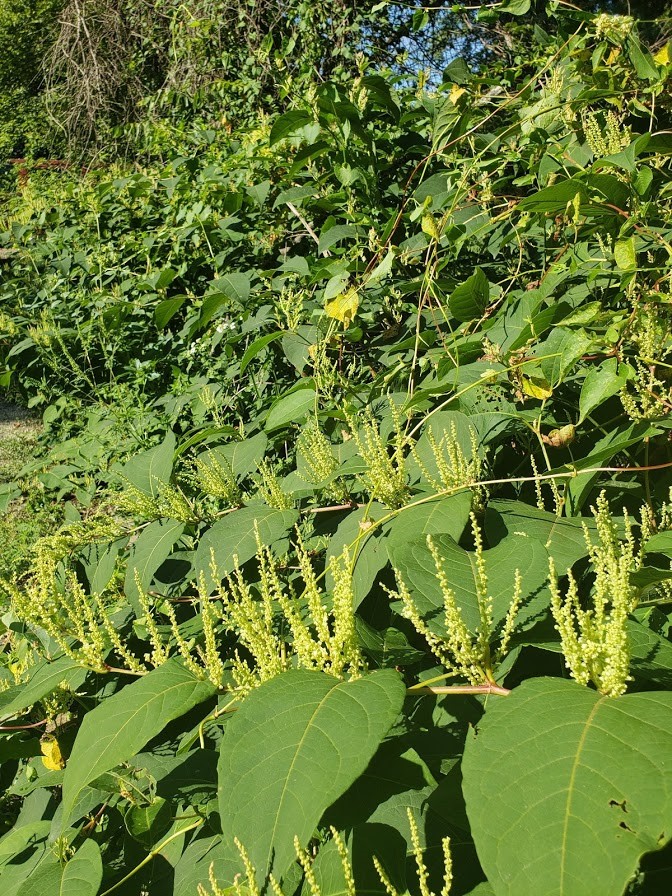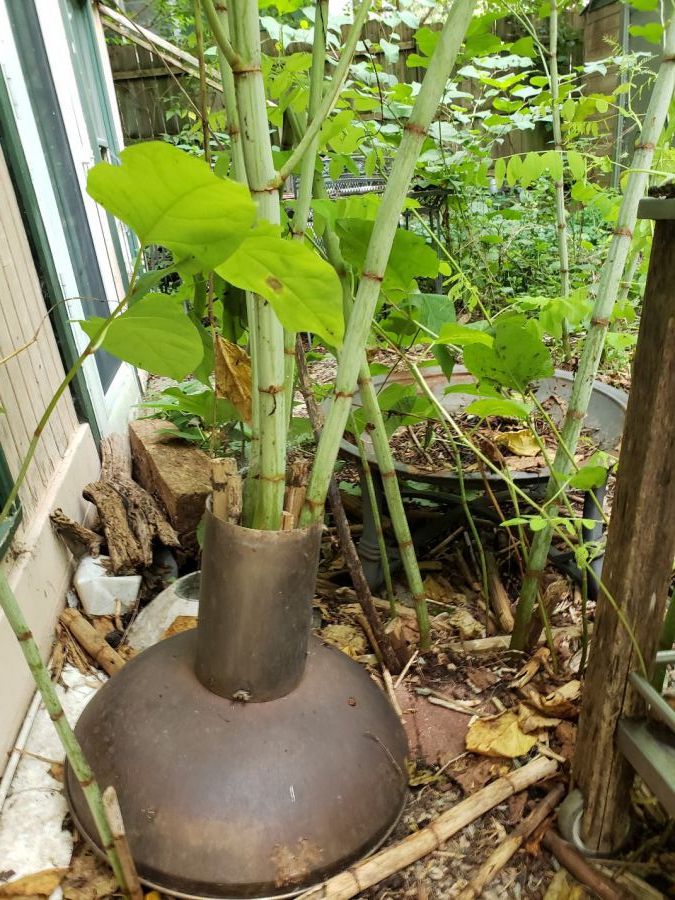Japanese Knotweed (Report an Infestation)
Japanese Knotweed is a serious concern on stormwater land because it quickly forms dense stands and is capable of damaging infrastructure, displacing native vegetation, causing erosion, and disrupting riparian areas.
Due to its vigorous and nigh indestructible root system, Japanese Knotweed requires careful management to completely extinguish a population.
There have been numerous reports of knotweed being repeatedly mowed for over a decade, only to sprout right back up again. Another challenge to face is the ability of this invasive plant to resprout from cut fragments. Given contact with the soil, segments as small as half an inch have the ability to send down roots and grow.


Report an Infestation
We are doing everything we can to find and eradicate this species and need all the eyes we can get! If you think you have seen Japanese Knotweed on Engineering land, please take photos and send them to Vegetation Coordinator Madeline Dumas at mdumas2@cityofmadison.com for identification.
